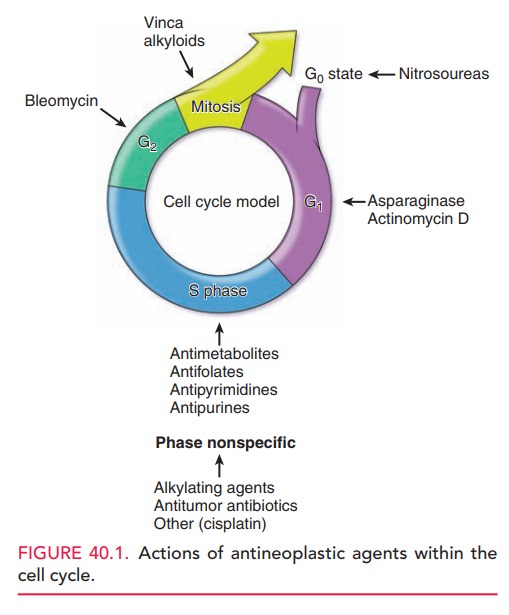Chapter: Obstetrics and Gynecology: Cell Biology and Principles of Cancer Therapy
Cell Cycle and Cancer Therapy

Cell Biology and Principles of Cancer Therapy
Treatment of cancers involving
the breast and genital organs may involve surgery, chemotherapy,radiation
therapy, or hormone therapy, used alone or in combination. The specific
treatment plan depends on the type of cancer, the stage of
the cancer, and the charac-teristics of the individual patient. Individualizing treatmentis an important
aspect of cancer therapy.
CELL CYCLE AND CANCER THERAPY
Knowledge of the cell cycle is
important in understand-ing cancer therapies. The ideal cancer treatment would
be a drug that targets only cancer cells with no effect on healthy tissues.
In order
to optimally target only cancerous tissue, it is imper-ative to understand not
only how normal cells function, but also how cancer cells differ from normal
cells.
Many treatments are based on the
fact that cancer cells are constantly dividing, making them more vulnerable to
agents that interfere with cell division.
The cell
cycle consists of four phases (Fig. 40.1). Duringthe G1
phase (postmitotic phase), RNA and protein syn-thesis, cell growth, and DNA
repair take place. Once these processes are complete, the cell enters the S
phase (syn-thesis phase), during which the DNA is completely repli-cated. The G2
phase is a period of additional synthesis of RNA, protein, and specialized DNA.
Cell division occurs during the M phase (mitosis). After mitosis, cells can
again enter the G1 phase, or can “drop out” of the cell cycle and
enter a resting phase (G0). Cells in G0 do not engage in
the synthetic activities characteristic of the cell cycle and are not
vulnerable to therapies aimed at actively growing and dividing cells. The growth fraction is the proportion of
cells in a tumor that are actively involved in cell division (i.e., not in the
G0 phase). The growth fraction of tumors decreases as they enlarge,
because vascular supply and oxygen levels are decreased. Surgical removal of tumor tissue(cytoreductive debulking surgery) can
result in G0 cells reentering the cell cycle, thus making them more
vulnerable to chemother-apy and radiation therapy.

The generation time is the length of the cell cycle, from one M phase
to the next M phase. For a given cell type, the lengths of the S and M phases
are relatively constant, whereas G2 and especially G1
vary. The variable length of G1 can be explained by cells entering
the resting phase (G0) for a period and then reentering the cycle.
The length of G1 has a profound effect on the cell’s susceptibility
to treatment.
Chemotherapeutic agents and
radiation kill cancer cells by first-order kinetics. This means that each dose
kills a con-stant fraction of tumor cells, instead of a constant number. The
resulting clinical implication is that several intermittent doses are more
likely to be curative than a single large dose.
Related Topics